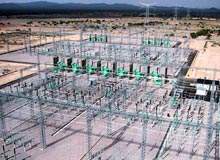
It was reported by Frost & Sullivan in mid-2007 that the switchgear and transformer markets in Australia and New Zealand were seeing unprecedented growth due to a prevailing trend of replacing or upgrading old transformers by the power transmission utilities. In addition, a boom in the mining industry because of increased mineral prices on the world commodities markets was causing increased demand for equipment in the region.
Couple this with an increase in demand for electrical equipment in North America, Europe and across the expanding Asian economies, particularly China and India, and you have expectations from the likes of Frost & Sullivan for the world isolation transformer market to experience an overall compound annual growth of 3.3% in revenues for the period 2007-2013.

Discover B2B Marketing That Performs
Combine business intelligence and editorial excellence to reach engaged professionals across 36 leading media platforms.
Market growth
US and European market demand is happening due to two very strong factors.
The enforcement of new specifications for isolation transformers in the US and Canada, mainly for medical and commercial applications, is a reaction to new specifications in Europe requiring upgrades.
The task is not as marked because the distribution network system in Europe doesn’t require too many isolation transformers. This is compounded by the fact that transmission transformers across Europe and the US are reaching the end of their designated operational life, even after increased investment in maintenance and refurbishment, and need to be replaced.

US Tariffs are shifting - will you react or anticipate?
Don’t let policy changes catch you off guard. Stay proactive with real-time data and expert analysis.
By GlobalDataMuch of the equipment was installed in the 1960s and, even with refurbishment, the lifespan of these transformers is only 25 to 40 years. This has led to some large asset replacement projects and high demands for new equipment.
Shadowing this activity in the market are the massive expansions of Chinese and Indian power networks where areas of both countries are being connected to their respective national transmission systems for the first time.
Over the next 25 years it has been estimated that 300 million Chinese citizens will relocate from rural areas to cities with an accompanying requirement for electrical power. Frost & Sullivan industry analyst MR Srivatsan commented: “Investments made in the power-generation sector are likely to have a cascade effect on increasing transmission and distribution infrastructure to connect supply and demand points in the power industry, stimulating demand for transformers and switchgear
by the utilities in the region.”
Transformer manufacture
The effect on the large manufacturers of transformers and switchgear has been to increase the demands on their manufacturing capacity to record levels. Power Technology talked to Duncan Crossland, the UK general manager for transformers at ABB, about the market. He says that due to the demands from both the western world and developing countries it is definitely a seller’s market at the moment with no slowdown in sight.
“Factories across the world are working at full capacity to produce transformer equipment, there is no slack,” Crossland said. “The engineering required to produce transformers is complex and expansion of production capacity would take time and require multi-million-dollar investment.”
Crossland says that as a result, larger manufacturers are understandably nervous about expanding their production capacities because the current surge in demand might not be sustained in the long term. “There have been some new factories established in India and China to produce transformers because this saves on the enormous transport costs of such heavy equipment,” (some of this equipment may go to the ANZ market as transport is not such a problem).
What is driving the market, according to Crossland is rising prices due to increased demand, but this does not mean that other factors are not at work. The cost of a transformer can be divided into 50%–60% for materials, and the rest being labour costs and a modest profit.
Since 2003 the prices of copper, steel and aluminium have increased markedly and with the price of Brent crude increasing as well prices of equipment are now being squeezed even higher but this has not dampened down demand. Demands from utility companies for equipment is such that they are reserving slots in factories for the manufacture of equipment when they don’t even know what they want yet.
ABB is coping with this demand through rigorous forward planning, according to Crossland. “The typical lead time for switchgear at the moment is six months and for transformers 18 to 36 months (before the market pressures the lead time for transformers was nine months). At the current time there is a vicious circle – the greater the orders received the greater the backlog and the harder it is becoming to deliver on time,” Crossland said.
“The only solution for utilities operators in this climate is forward planning for requirements and involving us [the suppliers] as early as possible in the process. At the current time ABB is pushing strongly to forge partnerships with utilities companies so that we can engineer entire project solutions. The result being that we can plan requirements more effectively and provide the latest and most compact technology.”
The future
Frost & Sullivan says it believes the burgeoning market for transformers and switchgear will continue into 2013. Whether a sustained demand for equipment will cause additional production capacity to be established in the US or Europe is open to argument, but this seems unlikely.
The Asian market is not one to let the grass grow under its feet and demand there and from the rest of the world is likely to see new transformer and switchgear production facilities constructed.
This may not be as easy as first thought though, because the engineering and design for transformers and switchgear is highly complex. Likewise, utilities companies tend to remain loyal to their trusted suppliers, where they are assured of high-quality and reliable equipment.




